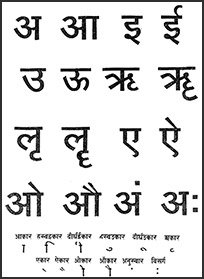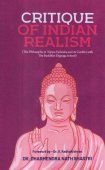Adhyavasaya, Adhyavasāya: 19 definitions
Introduction:
Adhyavasaya means something in Buddhism, Pali, Hinduism, Sanskrit, Marathi, Hindi. If you want to know the exact meaning, history, etymology or English translation of this term then check out the descriptions on this page. Add your comment or reference to a book if you want to contribute to this summary article.
Alternative spellings of this word include Adhyvasay.
In Hinduism
Purana and Itihasa (epic history)
Source: Cologne Digital Sanskrit Dictionaries: The Purana IndexAdhyavasāya (अध्यवसाय).—One of the two vṛttis of mahat.*
- * Vāyu-purāṇa 4. 46.

The Purana (पुराण, purāṇas) refers to Sanskrit literature preserving ancient India’s vast cultural history, including historical legends, religious ceremonies, various arts and sciences. The eighteen mahapuranas total over 400,000 shlokas (metrical couplets) and date to at least several centuries BCE.
Vyakarana (Sanskrit grammar)
Source: Wikisource: A dictionary of Sanskrit grammarAdhyavasāya (अध्यवसाय).—Determination to begin an activity with a view to get the fruit. cf. य एष मनुष्यः प्रेक्षापूर्व-कारी स बुद्ध्या कंचिदर्थं संपश्यति, संदृष्टे प्रार्थना, प्रार्थिते अध्यवसायः,म् अध्यवसाये आरम्भः, आरम्भे निर्वृत्तिः, निर्वृत्तौ फलावाप्तिः (ya eṣa manuṣyaḥ prekṣāpūrva-kārī sa buddhyā kaṃcidarthaṃ saṃpaśyati, saṃdṛṣṭe prārthanā, prārthite adhyavasāyaḥ, m adhyavasāye ārambhaḥ, ārambhe nirvṛttiḥ, nirvṛttau phalāvāptiḥ) cf. M. Bh. on I.3.14 and I.4.32.

Vyakarana (व्याकरण, vyākaraṇa) refers to Sanskrit grammar and represents one of the six additional sciences (vedanga) to be studied along with the Vedas. Vyakarana concerns itself with the rules of Sanskrit grammar and linguistic analysis in order to establish the correct context of words and sentences.
Shaivism (Shaiva philosophy)
Source: Brill: Śaivism and the Tantric Traditions (philosophy)1) Adhyavasāya (अध्यवसाय) refers to “determinations”.—If we are using “cognition” to refer to the perceiver, they are objects of cognition; but they themselves can be referred to as “cognitions” if we understand “cognitions” to mean determinations (adhyavasāya, parāmarśa).
2) Adhyavasāya (अध्यवसाय) refers to the “force of determination”, according to the Īśvarapratyabhijñāvivṛtivimarśinī 2.131-132.—Accordingly, “[Here is what Utpaladeva means with the words] ‘bāhya eva’. To begin with, the Buddhists, when saying that the validity of a means of knowledge arises from the force of determination (adhyavasāya), admit that even inference must have an object that is external [insofar as it is based on the determination of a previously perceived object. [...]”.
Source: ORA: Amanaska (king of all yogas): (Shaivism)Adhyavasāya (अध्यवसाय) refers to the “functions of judgement”, according to Śivasūtra 3.1 (Cf. Kṣemarāja’s Śivasūtravimarśinī).—Accordingly, “The citta is the [contracted] self (ātmā cittam)”—[Kṣemarāja’s explanation]—“This citta, which is permanent because it is not coloured by the impressions left by sense-objects and which takes the form of the buddhi, ahaṅkāra and manas with their functions of judgement (adhyavasāya), [ appropriation,] and [attention], is [called] the Ātmā [here], that is, the atomic individual, [from the verb √at ‘to wander’ in the meaning ‘the wanderer’,] because it moves on from womb to womb by taking on the operations of Sattva, [Rajas and Tamas] as a result of its being unaware of its true nature as [unlimited] consciousness”.

Shaiva (शैव, śaiva) or Shaivism (śaivism) represents a tradition of Hinduism worshiping Shiva as the supreme being. Closely related to Shaktism, Shaiva literature includes a range of scriptures, including Tantras, while the root of this tradition may be traced back to the ancient Vedas.
In Buddhism
Buddhist philosophy
Source: Google Books: The Treasury of Knowledge: Book six, parts one and two (philosophy)Adhyavasāya (अध्यवसाय) or Adhyavasāyaviṣaya (Sanskrit; in Tibetan: zhen yul) refers to “conceived objects”, representing one of the three types of “objects” (viṣaya) (i.e., ‘that which is to be comprehended or known’).—Accordingly, “That which is to be understood through valid cognition is ‘the knowable’. The terms ‘object’ (viṣaya; yul), ‘knowable’ (jñeya; shes bya), and ‘appraisable’ (prameya; gzhal bya) are all essentially equivalent, but it is the defining characteristic of the ‘object’ that it is to be comprehended or known, [...]. When objects (viṣaya) are analyzed in terms of their different functionalities as objects (yul du byed tshul), they fall into three distinct categories, namely, [i.e., conceived objects (adhyavasāya-viṣaya—zhen yul),] [...]
-
Languages of India and abroad
Marathi-English dictionary
Source: DDSA: The Molesworth Marathi and English Dictionaryadhyavasāya (अध्यवसाय).—m S Apprehension of by the soul or self; sentiment, purpose, or resolve arising towards a subject determined by the judgment. 2 Determination or settlement of a matter; ascertainment. 3 A figure of rhetoric. Understanding, in the object adduced for illustration, the illustrated subject.
Source: DDSA: The Aryabhusan school dictionary, Marathi-Englishadhyavasāya (अध्यवसाय).—m Apprehension of by the soul. Sentiment, purpose or resolve. Determination of a matter.
Marathi is an Indo-European language having over 70 million native speakers people in (predominantly) Maharashtra India. Marathi, like many other Indo-Aryan languages, evolved from early forms of Prakrit, which itself is a subset of Sanskrit, one of the most ancient languages of the world.
Sanskrit dictionary
Source: DDSA: The practical Sanskrit-English dictionaryAdhyavasāya (अध्यवसाय).—
1) An attempt, effort, exertion; न स्वल्पमप्यध्यवसायभीरोः करोति विज्ञाननिधिर्गुणं हि (na svalpamapyadhyavasāyabhīroḥ karoti vijñānanidhirguṇaṃ hi) H.1.v.l.; °सह- चरेषु साहसेषु (saha- careṣu sāhaseṣu) Daśakumāracarita 161.
2) Determination, resolution; mental effort or apprehension; संभावनं नाम अस्तित्वाध्यव- सायः (saṃbhāvanaṃ nāma astitvādhyava- sāyaḥ) P.VI.2.21. cf. also प्रतिविषयाध्यवसायो दृष्टम् (prativiṣayādhyavasāyo dṛṣṭam) | Sāṅkhya K.5.
3) Perseverance, diligence, energy, constancy; तत्कोऽयं पदे पदे महाननध्यवसायः (tatko'yaṃ pade pade mahānanadhyavasāyaḥ) Uttararāmacarita 4 absence of energy or resolution, drooping of spirits; (with mahānadhyavasāyaḥ as the reading, the meaning would be 'why this effort on your part i. e. to determine whether you should go or not, hesitation.')
Derivable forms: adhyavasāyaḥ (अध्यवसायः).
Source: Cologne Digital Sanskrit Dictionaries: Edgerton Buddhist Hybrid Sanskrit DictionaryAdhyavasāya (अध्यवसाय).—m. or nt. = °sāna, grasping, clinging, devotion (to something deprecated; compare adhyavasita): Divyāvadāna 534.19; adhyavasāye tiṣṭhati, cited from Mādhya- mikā-vṛtti in note 4 on Śikṣāsamuccaya 223.8. (On adhyavasāya, ger., see adhyavasyati.)
Source: Cologne Digital Sanskrit Dictionaries: Shabda-Sagara Sanskrit-English DictionaryAdhyavasāya (अध्यवसाय).—m.
(-yaḥ) Effort, exertion, determined application. E. adhi, and aba before ṣo to destroy, with the affixes dhañ and yak.
Source: Cologne Digital Sanskrit Dictionaries: Benfey Sanskrit-English DictionaryAdhyavasāya (अध्यवसाय).—i. e. adhi -ava-so + a, m. Perseverance, [Pañcatantra] 60, 6. Constancy, ib. iii. [distich] 261.
Source: Cologne Digital Sanskrit Dictionaries: Monier-Williams Sanskrit-English Dictionary1) Adhyavasāya (अध्यवसाय):—[=adhy-ava-sāya] [from adhyava-so] m. idem
2) [v.s. ...] (in [philosophy]) mental effort, apprehension.
3) [=adhy-avasāya] [from adhyava-sāya > adhyava-so] clinging to (earthly things), [Divyāvadāna]
Source: Cologne Digital Sanskrit Dictionaries: Goldstücker Sanskrit-English DictionaryAdhyavasāya (अध्यवसाय):—[tatpurusha compound] m.
(-yaḥ) 1) Ascertainment, determining.
2) As-siduous application, effort, energy.
3) (In philosophy.) The specific function of buddhi or intellect (q. v.), apprehension by intellect, its taking hold of an object either by ascertainment or volition.
4) (In rhetoric.) The same as adhyavasāna. E. so with ava and adhi, kṛt aff. ṇa and āgama yuk.
Source: Cologne Digital Sanskrit Dictionaries: Yates Sanskrit-English DictionaryAdhyavasāya (अध्यवसाय):—[adhya+vasāya] (yaḥ) 1. m. Perseverance.
Source: DDSA: Paia-sadda-mahannavo; a comprehensive Prakrit Hindi dictionary (S)Adhyavasāya (अध्यवसाय) in the Sanskrit language is related to the Prakrit word: Ajbhavasāya.
[Sanskrit to German]
Sanskrit, also spelled संस्कृतम् (saṃskṛtam), is an ancient language of India commonly seen as the grandmother of the Indo-European language family (even English!). Closely allied with Prakrit and Pali, Sanskrit is more exhaustive in both grammar and terms and has the most extensive collection of literature in the world, greatly surpassing its sister-languages Greek and Latin.
Hindi dictionary
Source: DDSA: A practical Hindi-English dictionaryAdhyavasāya (अध्यवसाय) [Also spelled adhyvasay]:—(nm) perseverance; enterprise, diligence; volition; ~[yī] perseverant; enterprising, diligent, industrious.
...
Kannada-English dictionary
Source: Alar: Kannada-English corpusAdhyavasāya (ಅಧ್ಯವಸಾಯ):—
1) [noun] a resolving or determining; deciding; resolution; determination.
2) [noun] an effort a) the using of energy to get something done; exertion of strength or mental power; b) a try, esp. a hard try; attempt; endeavour.
3) [noun] the quality of pursuing relentlessly and unflaggingly, in the face of opposition or interference, in achieving a goal; perseverance.
4) [noun] (rhet.) likening of two things of contrasting nature in such manner that the one is completely absorbed in the other.
Kannada is a Dravidian language (as opposed to the Indo-European language family) mainly spoken in the southwestern region of India.
See also (Relevant definitions)
Partial matches: Avasaya, Saya.
Starts with: Adhyavasayabhiru, Adhyavasayaka, Adhyavasayavishaya, Adhyavasayayukta.
Ends with: Anadhyavasaya, Aphaladhyavasaya, Duradhyavasaya, Sadhyavasaya.
Full-text (+5): Adhyavasayayukta, Attiyavacayam, Vaska, Adhyavasayin, Duradhyavasaya, Abhibuddhi, Adhyavasana, Adhyavasayaka, Prativishayam, Ajbhavasaya, Atishayokti, Adhyvasay, Adhyavasayabhiru, Adhyavasita, Adhyavasyati, Ajjhosaya, Paramarsha, Saugata, Atishaya, Mahan.
Relevant text
Search found 22 books and stories containing Adhyavasaya, Adhy-avasaya, Adhy-avasāya, Adhyava-saya, Adhyava-sāya, Adhyavasāya; (plurals include: Adhyavasayas, avasayas, avasāyas, sayas, sāyas, Adhyavasāyas). You can also click to the full overview containing English textual excerpts. Below are direct links for the most relevant articles:
Alamkaras mentioned by Vamana (by Pratim Bhattacharya)
10: Definition of Atiśayokti Alaṃkāra < [Chapter 4 - Arthālaṃkāras mentioned by Vāmana]
9: Definition of Utprekṣā Alaṃkāra < [Chapter 4 - Arthālaṃkāras mentioned by Vāmana]
3: The classification of poetic figures < [Chapter 5 - A Comparative study of the different alaṃkāras mentioned by Vāmana]
The backdrop of the Srikanthacarita and the Mankhakosa (by Dhrubajit Sarma)
Part 5h - Alaṃkāra (8): Atiśayokti or hyperbole < [Chapter III - Literary Assessment Of The Śrīkaṇṭhacarita]
Mudrarakshasa (literary study) (by Antara Chakravarty)
3.8. Use of Atiśayokti-alaṃkāra < [Chapter 3 - Use of Alaṃkāras in Mudrārākṣasa]
A comparative study between Buddhism and Nyaya (by Roberta Pamio)
3.2. Epistemology of Vaibhāṣika and Sautrāntika < [Chapter 2 - The Four Buddhist Schools of Philosophy]
5. History of the Indian views on Nature of Pratyakṣa < [Chapter 5 - Perception: A Comparative Study]
Nirvikalpaka Pratyaksha (study) (by Sujit Roy)
Chapter 5d - Nirvikalpaka Pratyakṣa in Sāṃkhya-Yoga
Brahma Sutras (Ramanuja) (by George Thibaut)
Sutra 2.4.5 < [Second Adyaya Fourth Pada]
Related products
